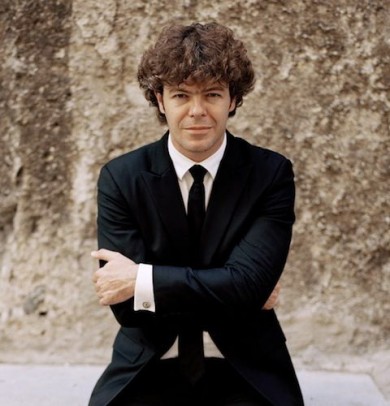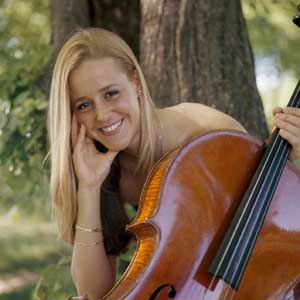Heras-Casado, New World raise the roof with intense Shostakovich

Pablo Heras-Casado led the New World Symphony in music of Elgar and Shostakovich Saturday night at New World Center.
Ears may still be ringing from Saturday night’s high-intensity New World Symphony concert featuring Shostakovich’s colossal Tenth Symphony.
Pablo Heras-Casado is one of the fastest rising stars today, and the 36-year-old Spanish conductor confirmed it in two moving, large-scale works. Youthful in a slim-cut black suit, he conducts with his hands, containing everything within precise, multilayered beat patterns.
Heras-Casado was joined by Argentinian cellist Sol Gabetta for Edward Elgar’s Cello Concerto. The Romantic work, written in 1919, favors long lyrical statements over flash, and Heras-Casado’s balletic, expressive conducting cast the orchestra as a unified, equal partner to Gabetta.
From her fearless opening double and triple stops, Gabetta’s combination of wiry strength, singing middle range, and flawless intonation, were gently couched by Heras-Casado’s fluid transitions into the orchestra, for a surprisingly intimate performance. Gabetta’s smiles, body language, and frequent eye contact with the orchestra invited them into a dialogue in which she led and responded to them.
In the Lento and second Adagio, Gabetta breathed and swayed in and out of Elgar’s long melodies. Sparks of impish passagework were matched by the orchestra’s playful winds, brought into relief by Heras-Casado. A majestic, Romantic tone from the orchestra in the cyclic final Allegro perfectly complemented Gabetta’s expansive, plaintive lines.
The orchestra appeared to adore her even more than the audience, and an unexpected orchestral encore of Gabriel Fauré’s poetic Après un rêve showed Gabetta’s soulful side, with soft phrasing over a whispery orchestra.
Heras-Casado revealed a bolder side of his podium personality in Dmitri Shostakovich’s Symphony No. 10. Written shortly after Stalin’s death in 1953, the work includes an unflattering musical portrait of the communist leader, and is built on musical mottos derived from the names of the composer and his muse, Elmira Nazirova.
The heart of Shostakovich’s music lies in his searching contrapuntal melodies. Heras-Casado proved his understanding in the opening Moderato, the cellos supporting the double basses’ mournful lines. Using restraint for great effect, he resisted the temptation to crescendo too fast in the lengthy introduction. Instead, he let the music bloom cumulatively through David Lemelin’s standout clarinet and Melanie Lançon’s flute solos, into austere peaks of orchestral counterpoint, a chorale between horns and trombones, a sarcastic waltz. Heras-Casado’s narrative approach, despite ear-splitting volume, made each melodic layer perceptible.
A super-fast Allegro featured power-chord strings, martial brass and percussion in a macabre march. With nothing sweet or subtle as the performers dialed it up to eleven, Shostakovich’s opinion of Stalin was clear.
Despite dancelike and march sections, slow, string driven lines dominate the Allegretto, built on Elmira’s five-note and Shostakovich’s four-note mottos. Bassoons and double basses were favored, as the work swelled into urgent juxtaposed mottos, one particularly thrilling bells-up statement in four horns. Concertmaster Jeffrey Dyrda’s solo violin sequences, over ominous timpani and low percussion, and a final flute and piccolo duo from Melanie Lançon and Henrik Heide conveyed irony and resignation.
The final Andante-Allegro featured sincere lines among solo winds over low string countermelodies, broken up by ominous storm swells of strings and percussion. Suddenly transforming into a rushing, festive Allegro, the work was driven relentlessly by Heras-Casado at breakneck speed.
The young, energetic musicians delivered full power, the frantic tempo minimizing the motto’s searching anxiety in the earlier movements. A brief, characteristically mournful personal motto trumpet and trombone interrupted the sprint to the finish, reminding the audience that Shostakovich’s victories were fleeting.
The program will be repeated 2 p.m. Sunday at New World Center. nws.edu
Posted in Performances
Leave a Comment
Sun Mar 23, 2014
at 1:16 pm
No Comments







